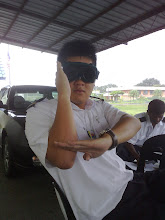
Details are emerging about the disappearance of an Air France flight from Brazil to France in the early hours of Monday.
Flight AF 447 left Rio de Janeiro, bound for Paris, at 1900 local time (2200 GMT) on Sunday 31 May.
The aircraft, an Airbus A330-200 with registration F-GZCP, had been in operation since April 2005.
Shortly after the aircraft's scheduled arrival time in Paris of 1110 local time (0910 GMT), it was announced that the flight was missing.
French aviation officials have said they may never find the flight data recorders of an Air France jet that went missing over the Atlantic.
The officials promised a thorough investigation but said the circumstances were very difficult.
Flight AF 447 was heading from Rio to Paris with 228 people on board on Monday when it was lost over the ocean.
Debris has been spotted 650km (400 miles) off Brazil's coast and navy vessels are converging on the area.
'Worst catastrophe'
The French civil aviation officials, at a news conference in Paris, said they hoped there would be an initial report by the end of June.
The officials, headed by Paul-Louis Arslanian, chief of the French civil aviation ministry's bureau of investigation, said there had appeared to be no problems with the flight before take-off.
Mr Arslanian said there would be no speculation and that it was "essential we check and verify everything".
He said: "This catastrophe - which is the worst that our country has witnessed in terms of aviation, took place in a very difficult region... so the investigation will not be easy... but we are not giving up."
Mr Arslanian said the exact time of the accident was not known, nor whether the chief pilot was at the controls.
It is possible that the fury of an equatorial storm brought down Air France flight 447.
The plane's flight path seems to have taken it through what meteorologists call the inter-tropical convergence zone.
This is where two air masses meet, sending huge storm clouds more than 40,000ft (12,000m) into the sky.
Eight years ago, former British Airways captain Roger Guiver was confronted with an enormous storm during a flight from Cape Town to London Heathrow.
"You take weather like that extremely seriously," he says. "You don't go anywhere near it."
There are two potential dangers - lightning and severe turbulence.
Lightning
Lightning can strike anywhere - the charge flows around the plane's skin and can damage electrical systems.
But aircraft wings have what are called "static wicks"(picture shown above) which dissipate the electricity safely.
Bored, long-haul passengers looking out of the window at the wings will spot them - thin, aerial-like structures, trailing in the slipstream.
Roger Guiver says one dramatic warning of a possible lightning strike is St Elmo's Fire - static that flickers over the windscreen as the plane flies through a storm.
But lightning almost never causes air crashes, at least directly.
The respected Aviation Safety Network database lists just 15 incidents in more than 50 years of aviation history.
The worst was the loss of an Iranian Air Force Boeing 747 in 1976 near Madrid. Lightning ignited vapour in a fuel tank, causing an explosion.
Electrical faults
If lightning did strike AF 447, it is more likely to have caused the electrical faults mentioned in automated maintenance messages which were sent out over a satellite network shortly before the plane disappeared.
But electrical problems might in turn have resulted in the crew losing vital control systems, or a fire.
The pilot's main weapon against turbulence is weather radar - the receiver mounted in the nose of the aircraft can pick up signs of storm clouds ahead, which are displayed in the cockpit.
Crews aim to fly at least 10 miles (16km) around the worst storms, for reasons of safety and passenger comfort.
But it is not an exact science. Weather radars detect moisture primarily, and sometimes struggle to identify ice crystals, which can be present in the worst storm clouds.
At night, storms cannot easily be seen by eye.
Turbulence
Pilots try to avoid ending up in big storm clouds because of the forces they can impose on a plane.
At cruising height, the plane must be kept to precise speeds - the altitude means changes of speed can cause stalling.
But in a storm, the plane can be lifted up or thrown down in the turbulence, making it difficult for the autopilot to fly within the limits.
"It's not frightening for us, but it's awful for the passengers at the back," says Roger Guiver.
Investigators will want to discover if the Air France Airbus suffered such severe turbulence that it caused catastrophic structural damage - the loss of a rudder, engine mounting, or even a broken wing.
This would be extremely rare.
The wings on newly designed aircraft are literally tested to destruction by bending them at least 50% beyond the kinds of forces produced in a storm.
As ever with air accident investigations, finding the cockpit voice recorder and flight data recorder is key.
They may be up to thousands of metres below the surface.
But the US National Transportation Safety Board says the homing beacons they carry should be detectable down to 14,000ft (4,300m).
Retrieving them is tricky but, as military salvage experts point out, these
days there is no place on the ocean floor where remotely operated vehicles cannot go.The boxes and key sections of wreckage could be winched up, so that investigators can begin the task of explaining the fate of flight AF 447.
source was found at http://news.bbc.co.uk/2/hi/americas/8080669.stm
http://news.bbc.co.uk/2/hi/americas/8077304.stm



0 comments:
Post a Comment